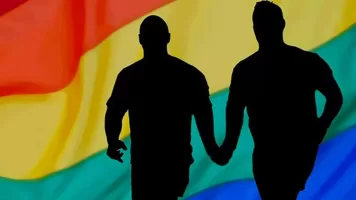The legalisation of same-sex marriage has led to an increase in the numbers of same-sex couples recorded as living together, with numbers rising by over 50% between 2015 and 2018. This rise could be attributed to couples feeling more comfortable with recording their status since their unions became legally recognised, or it could be that more people are now confident enough to take the step to move in together. With full access to the wedding industry, many couples can now consider marriage, and the records show that of those couples who live together, over a quarter are married. For many couples, marriage means following established wedding traditions; for others, embracing new trends and alternatives is more appealing, with much of this being reflected in the wedding ring.
Community Pride
Although many couples choose traditional metals and designs for their wedding rings, a large number also embrace the opportunity to celebrate their community in their ring choice, and many jewellers now cater to this demand. Wedding rings are available to reflect the pride flag, with a range of options being designed, from coloured jewels to rainbow bands. Many local jewellery shops are limited by their size, however, so couples looking to explore this route often find more success online, where many more options are available. Many rainbow wedding rings combine the traditional style of the wedding band with the pride flag, catering to the desire for bold statement pieces as well as more subtle, elegant alternatives, and can vary greatly in price depending on the number of precious stones incorporated and the metal chosen for the band itself.
Two Rings In One
Many same-sex couples make the decision to get married mutually, which often means there’s no traditional proposal. This means that although many couples have both an engagement ring and a wedding ring, many others will wear just a single ring, and often their choices reflect both of the traditional rings, with bands including a diamond or another stone more commonly associated with engagement. Other couples opt for a watch or alternative piece of jewellery to mark the engagement, reserving the finger for the wedding band itself. The Gay Wedding Planner found that 81% of gay men decide against engagement rings altogether, marking the engagement with a gift instead.
Alternative Fingers
Traditionally, a wedding ring is worn on the left hand ring finger, and while many couples follow this custom, many others welcome the opportunity to break with rigid traditions that have previously excluded them. Some couples choose to wear the ring on the equivalent finger on the right hand, while others choose another finger entirely. It is usually the case, however, that the decision is taken mutually, and both partners will wear their rings on the same finger.
The legalisation of same-sex marriage in Britain is an important step towards equality, and allows gay couples to celebrate their relationship and have their union legally recognised. However, marriage is a tradition that has excluded them throughout history, and those who embrace it often wish to make subtle changes to rigid traditions. The wedding ring is a simple way that couples can simultaneously break with tradition and embrace it, reflecting both their relationship and the gay community in their choice of ring.




